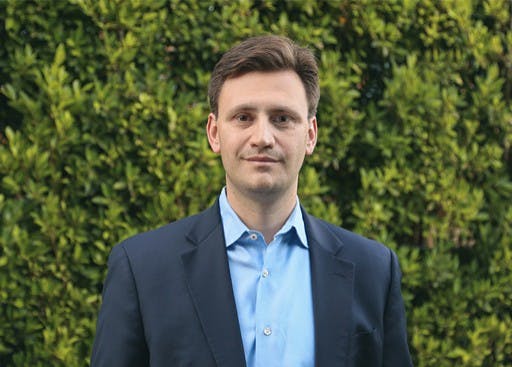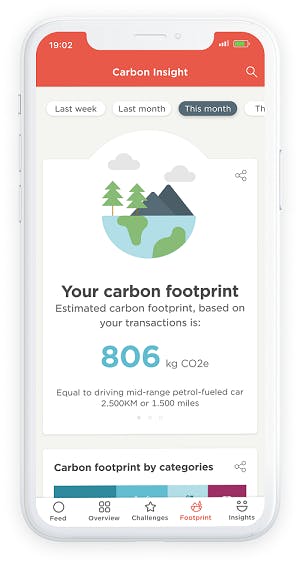Moderated by Ron Shevlin with guests CEO of Aspiration Andrei Cherny, VP of Greenpenny Bank, Jason MacDuff and Meniga’s Bragi Fjalldal
The third webinar in our series is in partnership with Cornerstone Advisors where Ron Shevlin led the discussion around the business opportunity in financial services to serve climate-conscious consumers.

Setting the stage
Like it or not, climate change is a highly politicized issue. Ron Shevlin of Cornerstone Advisor kicked off the discussion by setting the stage for the upcoming discussion.
This isn’t about the politics, or even the issue itself — it’s about the business opportunity here. There are plenty of grocery store owners who don’t like bananas but sell bananas in their store, because that’s what the market wants.
It’s about the market opportunity to serve consumers who are looking for better products from their financial institutions.

Shevlin shared a few highlights from a recent study conducted as research and a precursor to the event starting off with evidence that Climate change is widely thought of as the most important challenge facing the US today.

Building off this, Shevlin looked into carbon footprint tracking as a solution. As it stands, very few people are tracking their carbon footprint, but their attitudes towards this are not because they are not interested, but simply because they do not know-how.

Aspirational banking with Andrei Cherny from Aspiration
Opening up the stage to CEO and Co-Founder of Aspiration Andrei Cherny, who holds a Bachelors from Harvard, a Law degree from Berkley and served as senior speechwriter to Al Gore during his time as Vice President to know more about why Aspiration came to be, its customers and what makes it successful.
- What led you to conclude that there was a market for consumers who wanted environmentally friendly banking services?
- Who are your customers and what has surprised you about who has gravitated to Aspiration?
- How do you personalise or customise the products themselves to serve customers who are looking for environmentally friendly products?
- Looking at the customers you are attracting, do they tend to switch banks when coming to Aspiration or are they opening up additional accounts, either primary or secondary?

Cherny gave us insight into their internal data regarding consumer opportunities within the wider population.
What we see is that a third of the public at large are climate conscious consumers and are looking to such factors when choosing their bank.
He goes on to specify that these customers cut across all boundaries; gender, income, geography, with only a slight tilt in age (20–30s are more aware than 50+), and all unite around the general concern of climate change.

Keeping more money in the pockets of customers through renewable energy with Jason MacDuff
Jason MacDuff, Vice President of Greenpenny bank, spin off of local community bank Decorah Bank, shared the story of how their bank came to be completely carbon neutral and has extended that passion outside of the bank by helping its community build one of the highest renewable energy adoption rates in the country.
- What is the strategy of Decorah and Greenpenny in the market?
- Solar lending is a big part of Greenpenny, why should other banks be paying attention to this?
- Why did Decorah set up a separate business instead of doing it in-house in Decorah?
MacDuff gave us a glimpse into the motivation behind the market strategy of Decorah bank and why we should be putting our eggs into the renewable energy basked.
The transition to renewable energy is happening. Billions of dollars are flowing into space.
He makes the point that what continues to drive consumers to their bank is that at the end of the day, green home loans, EV vehicles and renewable energy that is by nature self-replenishing, keeps more money in people’s pockets.

MacDuff explained that Greenpenny wants to feel like the local community bank for the renewable energy community instead of geographically local. Building off the statistic that shows that consumers are looking to do business with companies that are aligned with their world view.
1 out of 5 consumers said it was very important to them that the bank they get a loan from offers green loans and evnironmentall friendly products, even if they don’t choose the green product for themselves.

The European perspective on adopting green products with Bragi Fjalldal
CMO & VP of Business Development Bragi Fjalldal shared Meniga’s experience with how ESG has been trending globally but specifically in European countries.
- What is the European perspective with the growing trend with banks offering carbon footprint tracking services?
- Can you talk about the early adopters regarding Carbon Footprinting solutions?
- Are banks simply adding a tracker into their portfolio or rethinking their overall strategy to involve climate change?

Fjalldal divulged what Meniga has identified as the consumer’s 2 primary needs when it comes to successfully keeping track of their carbon footprint.
- They need to understand their impact
- They need the tools to be able to do something about it
He furthers the point by stating that most people do not have the patience to enter in the minutia of their everyday movements, which is what puts banks in the unique position to use transaction data for an easy, accurate and real-time estimation of their carbon footprint.

And the benefit to these early adopters is that there is a significant uptick in the recurring engagement of banking customers.
The solutions that are being deployed today are making it seamless to track and take action. It’s not just an arbitrairy C02 number presented to you, but its educating you on what your number means, benchmarking it with people in your demographic, offers options to offset and gives the bank opportunity to cross-sell green financial products.
Fjalldal makes the point that most banks now have senior people filling ESG and CSR positions, however, most incumbent banks cannot move as quickly as Cherny’s Aspiration or MacDuff’s Greenpenny.
This is why these carbon footprinting white-label solutions are a great first step of the journey to building a digital environment suited to promote green financial services online.
You can watch the entire webinar here, which also includes a great question and answer session at the end.
And if you’re interested in the research conducted prior to the event and presented by Ron, you can access the report here.

About Cornerstone Advisors
Financial service organizations rely on their consulting and research services to improve profitability and elevate performance quickly and efficiently. Cornerstone clients get access to real-world experience resulting from ongoing advisory engagements with banks

